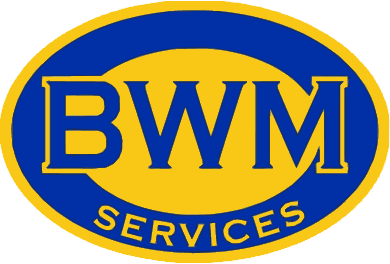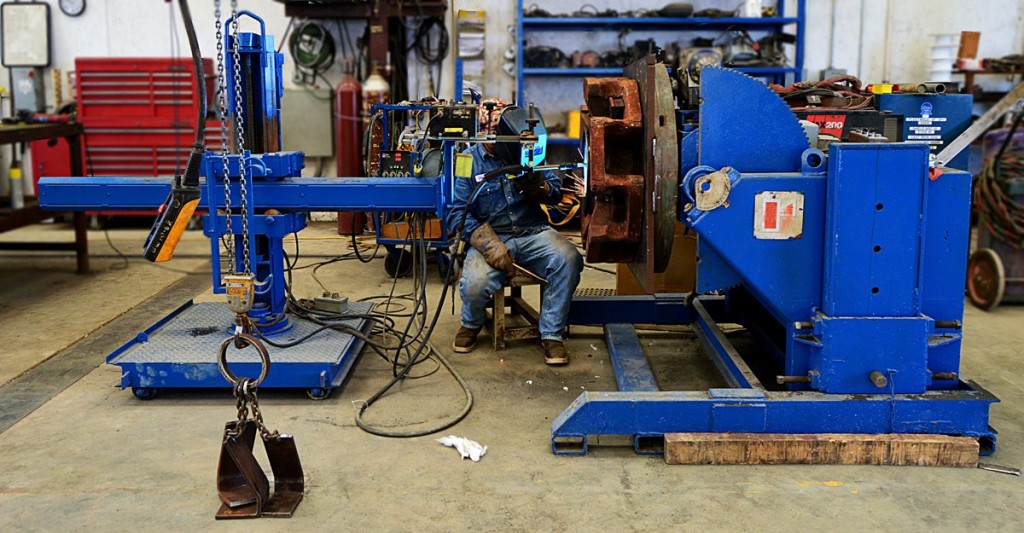There is a continuing trend toward the reduction of allowable worker exposures to a range of potentially harmful substances generated by arc welding processes. The substances present specifically in the welding environment depend on the composition of the consumable electrode alloy, the base metal being joined, and the presence of any surface materials or coatings on that base material. A few specific substances in welding fumes may have known or suspected health risks and these substances have appropriate occupational airborne exposure limits. Until recently, it was recommended by the American Conference of Governmental Industrial Hygienists (ACGIH) that an exposure limit for welding fume particulate of 5 mg/m³; however, the exposure limit for a given individual substance in the fume may be many orders of magnitude lower. Therefore, there are certain substances that are of environmental health significance which can effectively drive the need to limit total welding fume exposures to very low levels in order to ensure that the exposure to these specific compounds remains below their respective applicable exposure limits. Typically, these compounds include forms of manganese, chromium, nickel, cobalt, cadmium, and copper.
It is imperative the welding community has a better understanding of what can be done to reduce the amount of these and other potentially harmful materials found in the workplace, especially because of the recent significant lowering of applicable worker exposure limits to manganese and hexavalent chromium. The challenges are significant when it comes to keeping fume exposures to very low levels. Careful selection of consumables and welding processes, as well as the proper use of ventilation and personal protective equipment is the only way to achieve and maintain low levels of exposure.
Both parts of this article are intended to demonstrate an approach to fume reduction. It is not all inclusive or reflective of every material or process selection that can be made. It is a suggested guideline to a methodology for exposure reduction in the workplace.
Other Material Factors Influencing Fume Generation
Rust, mill scale, and other surface contaminants, including antispatter compounds, rust preventatives, and residual cutting fluids will have an effect on the generation of fumes. With the effect of the base material condition and the surface residuals on the plate on fume generation, cleaner base metal means less fume is generated.
Fume Reduction by Selection of Welding Parameters
Voltage and Current
Fume generation is affected by both welding voltage and current. The power applied to the electrode, in part, determines the length of a welding arc. The arc length, or the distance that metal drops must travel from the electrode to the weld pool increases as the voltage increases. A greater amount of time for the droplet to react and emit fume is allowed by a longer arc path. As voltage increases, welding fume generation will also increase. The welding current is proportional to the amount of material melted and also influences the type of metal transfer that occurs. Generally, as current level increases, fume levels will increase as well. As current levels increase in solid wire GMAW, depending upon the shielding gas in use, the type of metal transfer may change. As the electrode current density increases, metal transfer changes from short-circuiting to globular to fine droplet spray. This change also affects arc stability and that in turn affects the fume level.
Composition of Gas Blends
For gas-shielded processes, fume levels are influenced by the reactivity of the gas blend and also by its influence on the type of metal transfer required. It is possible to obtain stable, finer droplet transfer at moderate current levels when high percentages (>80%) of argon are used. Within these same current level ranges, transfer remains globular when shielding gases contain more than 20-25% carbon dioxide. The levels of welding fumes increases as the percentage of CO2 in the shielding gas increases. This is true as well for flux-cored, metal-cored wires and for solid wires.
Summary: Put it All Together to Reduce Welding Fume Generation
- Implement the use of welding processes/equipment that generate lower fume levels.
- Pulsed GMAW can reduce fume levels from 25 to 50% compared to conventional GMAW using either solid or metal-cored wires.
- GTAW, SAW, and tandem GMAW may reduce the amount of fume generated per weight of electrode deposited as weld material.
- Choose low-fume welding consumables.
- Solid wires and metal-cored wires generally produce lower fume levels than flux-cored wires and covered electrodes; compare weight of fume to weight of weld deposited.
- Consumables with lower levels of manganese and chromium may be available. For example, ER70S-2 and S-3 solid wires have lower manganese than ER70S-6 wires; EXX-TX-K3 low-alloy flux-cored electrodes have no chromium and meet the same requirements as Cr-bearing EXX-TX-K4 electrodes; hardfacing electrodes with low or no chromium are available and might be suitable replacements for higher chromium products.
- Use argon-based shielding gases.
- Use of argon-based shielding gases with the gas-metal arc and flux-cored arc welding processes will reduce fume levels substantially from those levels found when CO2 shielding is used.
- The higher the argon content/lower the CO2 content of the shielding gas blend (e.g. Ar-10 CO2 vs. Ar-20CO2), the lower the fume generation rate.
- Optimize the welding process variables (arc length, shielding gas flow rate, welding parameters, correct electrode diameter) for the specific application to reduce fume generation.
- Don’t overweld as the depositing of excess weld metal can lead to the generation of substantially more welding fume.
Other Factors to Consider
While it is understood how welding variables such as current and voltage, welding process and consumable selection can affect the level of welding fume generation, it is difficult to predict with accuracy what welder exposure actually will be because the work environment and welders themselves often have the greatest impact on exposure. The position of the welder’s breathing zone (usually defined as being within about 9 in. of the nose and mouth) with respect to the fume plume rising from the arc has the greatest influence on the level of fume exposure. The exposure will be higher the closer it is to the plume. Personal welding habits, the position of the work with respect to the welder, the types of welds that need to be completed and the style of protective equipment worn all affect welder exposure levels as well. Fume exposure will also be influenced by other factors such as the size of the work area, type and effectiveness of ventilation, and number of welding, cutting, and grinding operations that are occurring in the area.
Use of Engineering Controls
When all process modification guidelines have been evaluated and implemented where possible, the predominant method for attaining additional removal of fume from the welder’s breathing zone is deployment of ventilation. To increase the effectiveness of ventilation a variety of approaches can be taken. The level of ventilation that will keep fumes and gases below their applicable exposure limits in the welder’s breathing zone is adequate ventilation.
The best way to achieve adequate ventilation depends upon size and shape of the workplace, number and type of operations, contents of the fume plume, position of the welder’s head, and the type and effectiveness of the ventilation. Adequate ventilation can be obtained through natural or mechanical means, or both.
Natural Ventilation
Natural ventilation is the movement of air through a workplace by natural forces. Roof vents, open doors and windows provide natural ventilation. The amount of airflow in the welding area can be affected by the size and layout of the area/building. Natural ventilation can be acceptable for a few welding operations if the measured levels of contaminants are kept below allowable limits.
Mechanical Ventilation
Mechanical ventilation is the movement of air through a workplace by a mechanical device such as a fan. Examples of mechanical ventilation include local exhaust, local forced air and general ventilation. Local exhaust ventilation (LEV) systems consist of a capture device that removes fumes and gases at or near their source. Fixed or movable capture devices are placed near or around the work and should be located as close as possible to the work to draw the plume away from the breathing zone. When properly designed and used, local exhaust ventilation systems tend to use less energy than general plant ventilation because they control fumes at the source.
Local forced air ventilation is a local air moving system such as a fan that moves fresh air horizontally across a welder’s face. An example of this is a wall fan.
An equal amount of fresh air must be supplied to maintain the building air pressure balance whenever capture devices or other exhaust systems are used to remove air from the workplace. When designing the supply air system it is important to use caution so the distribution system e.g. diffusers, wall fans, etc., do not disturb fume capture by the LEV. Also, be aware that air movements above 150 ft/min at the arc or flame may interfere with the welding process by distributing the flow of shielding gas around the arc area.
Personal Protective Equipment (PPE)
The exposure levels of workers in the welding environment should be evaluated by a qualified industrial hygienist. If the exposure levels are deemed unacceptable with reference to current occupational exposure limits (OELs) such as OSHA, PELs, ACGIH TVLs, and NIOSH RE’s and cannot be sufficiently reduced by the process changes and engineering and/or administrative controls, the selection of appropriate respirator protection should be employed. Respiratory protection should only be used in conjunction with a formal “Respiratory Protection Program” as prescribed in OSHA 29 CFR 1910.134. Elements of such a program include a written plan detailing how the program will be administered and may include the following:
- A complete assessment and knowledge of respiratory hazards that will be encountered in the workplace
- Procedures and equipment to control respiratory hazards, including the use of engineering controls and workplace practices designed to limit or reduce employee exposures to such hazards
- Guidelines for the proper selection of appropriate respiratory protective equipment
- An employee training program covering hazard recognition, the dangers associated with respiratory hazards, filter change-out schedules, as well as proper care and use of respiratory protective equipment
- Inspection, maintenance, and repair of respiratory protective equipment
- Medical surveillance of employees.
An appropriate assessment of employee exposure levels is required for proper selection of respiratory equipment. Only when the exposure levels to the contaminants of health significance are properly evaluated can the proper level of respiratory protection be selected.
When needed, other personal protective equipment should be used to prevent body contamination. This may include gloves, sleeves, jackets, chaps, and head covers (“skull caps” or hoods). All PPE should remain in the the workplace and should not be taken home. A cleaning and replacement schedule for PPE should be established by employers, and workers should be trained regarding the proper use, inspection, cleaning and maintenance of assigned PPE. Compressed air should never be used for cleaning work clothing.
Other Methods for Reducing Exposure to Contaminants
Housekeeping
Some metallic compounds associated with the welding environment can be toxic by ingestion. A rigorous housekeeping program and adherence to basic personal hygiene practices will minimize employ exposure to these metals when these materials are present. Additionally, it is also important that workers are prevented from taking potentially contaminated dust away from the work site and home to their families. This will help to ensure that the duration of metal particulate exposure does not extend beyond the work shift and/or the workplace.
An effective housekeeping program involves at least daily removal of accumulations of metal-containing debris. Effective control measures are vacuuming dust with high-efficiency particulate air (HEPA) filtered equipment or wetting it with water before sweeping. Whenever possible, such cleaning operations should be conducted at the end of the day, after normal operations cease. Debris accumulated for disposal may contain reportable levels of potentially toxic metals. Therefore, it should be disposed of in accordance with federal, state and local government regulations.
Personal Hygiene Practices
Special attention should be given to workers’ personal hygiene to minimize exposure to metallic compounds. Areas with potential metal particulate contamination should be clearly demarcated and eating (including chewing gum), drinking, tobacco use (smoking/chewing), and the application of cosmetics should be prohibited in the restricted area. Carrying products associated with these activities into regulated areas should also be prohibited. Such measures will reduce the worker’s exposure to these metals and prevent their ingestion.
If contaminated by certain metals, work clothing must not be worn away from the job site. Potentially contaminated work clothes should never be laundered at home or taken from the work site by the employee. A professional service qualified in the handling of contaminated or potentially contaminated clothing should do the laundering.
Summary
An effective scenario for controlling and potentially reducing welding fume exposure will first involve a review of the welding process and consumables being used. An evaluation should be made of possible alternatives that will still meet the performance needs of the job at acceptable levels of productivity while possibly lessening the exposure level of welders to contaminants in the environment. Once process, consumables and welding parameters are investigated, the next step toward additional fume reduction involves a review of the available types of ventilation suitable for use in the specific application. Finally, if additional measures are required to control exposures to acceptable levels, proper personal protective equipment should be selected.
The following is also a good summary for the welder to understand and follow:
- Keep your head out of the fumes.
- Re-position the work, your head, or both to keep from breathing the fumes.
- Use ventilation to control the fumes and gases produced from cutting and welding.
- Adequate ventilation keeps exposures below allowable limits.
- Have a technically qualified person evaluate the exposure to determine if the ventilation is adequate.
- Wear an approved respirator when ventilation is not adequate or practical.
For more information feel free to contact us at BWM Services with the link below!


